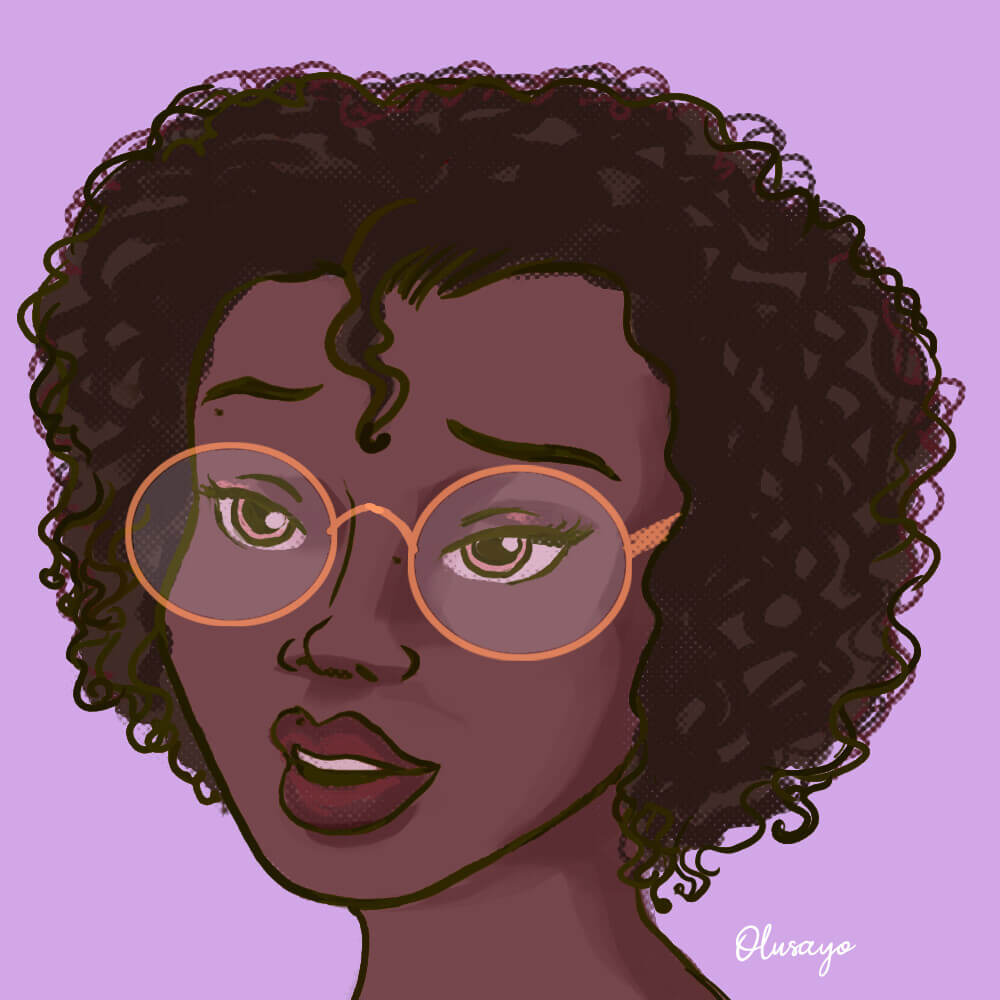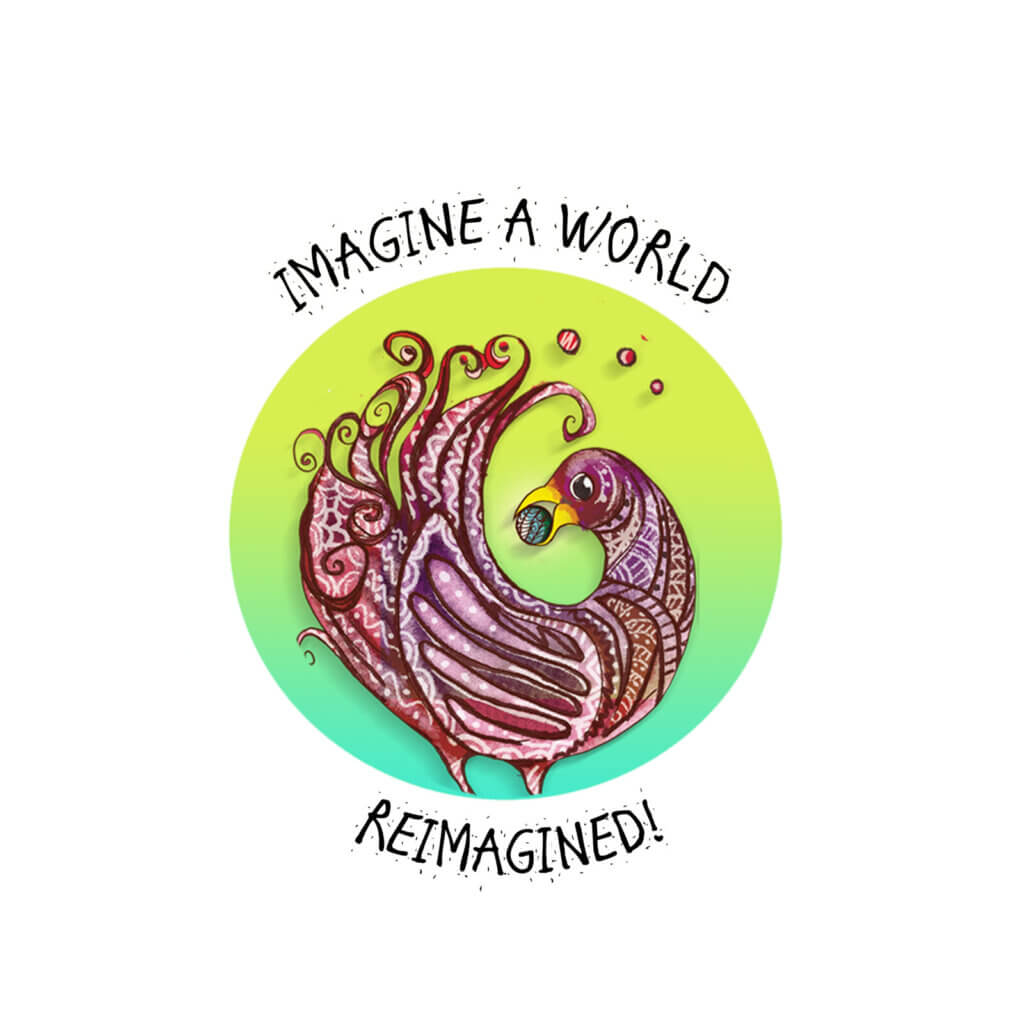The art of Ajet is characterized by bold illustration, colors, intricate details, and a distinct sense of whimsy.
Their work draws on the rich traditions of Nigerian art while incorporating elements of contemporary styles and techniques. While experimenting with different media, styles and techniques, themes of gender, family, and culture emerged in their body of work.
This body of work now includes folklore, storytelling performance, and several published afro-centric picture books. Their bold and detailed style quickly gained recognition, and they are now widely regarded as one of Nigeria’s most exciting and talented young artists. Ajet continues to create beautiful, thought-provoking art and illustration that inspires conversation.
With each new work, Ajet invites viewers to engage with the complexities of the human experience and to consider the ways in which artistic illustration can serve as a powerful tool for social and cultural transformation
Let’s meet the brains, Olusayo Ajetunmobi behind Ajet.
Hi Ajet, we love your illustrations and the causes you’ve chosen to support with your creativity. Do tell us about a childhood experience that largely influenced your creative slant
My parents didn’t let me watch much television growing up so I had to find ways to entertain myself. This meant reading a lot and also copying drawings out of illustrated books.
2. We’re going to ask a few questions about some books you’ve illustrated. Is that OK?
Yes 🙂

Illustration by Art of Ajet
What You Need to Know About Sexual Violence
3. In your illustrated book “What You Need to Know About Sexual Violence,” how did you approach the challenging task of visually conveying such a sensitive and important topic? What were some of the key considerations you had in mind while working on this project?
The most important thing for me was to convey simply that it could be any woman, and any man. The illustrations were anonymous and mostly headshots, so there were no elements to distract from the humanity of the people being represented.
4. Alright! Picture this: your illustrations are turned into an animated movie. What famous actors or actresses would you love to provide the voices for your characters, and why?
As long as Genevieve Nnaji and Patience Ozokwor are involved, I’m happy. I’ve always been a fan.
5. Are there any specific experiences or personal stories that influenced this particular project? If yes, How did you channel those experiences into creating impactful illustrations?
Because I am a professional, when I’m making work that has been commissioned, my focus is on the message that my client wishes to convey and not on my personal life. This is not to say my personality does not come into my profession, because I only accept projects that align with my values. the BookBuzz foundation was so in sync with what I feel is important, going so far as making these pamphlets available free of charge.

Illustration by Art of Ajet : What You Need to Know About Sexual Voilence
On Self Help Booklet for Migrant Returnees
6. Your work on the “Self Help Booklet for Migrant Returnees” and several delicate subjects showcases your ability to communicate complex ideas through illustrations. How did you ensure that your illustrations effectively conveyed the message and provided support for the target audience during their reintegration process?
I was in touch with a professor of psychology from the university of Ibadan, who had first hand experience with rehabilitating returnees. We talked about ways to make sure that the returnees felt represented in the work, and that their experiences were properly captured through the art. Our goal was to help them connect to the help made available for them by the IOM (international organization for migration)
7. If you were to design a book cover that magically transports readers into the story, what elements would you include to make it an immersive and enchanting experience?
It really depends on where I’m taking the readers, but I like to include elements that appeal to more senses than just sight. For a cover like “The Children of Light” I had full creative license and I was able to add elements of sound (from the ocean), touch (from the bubbles), smell (soap, earth, flowers), and even taste (from the citrus tree). These elements have to be subtle, so the focus remains on the characters. And I trust that readers are able to pick up on the subtleties and immerse themselves in the world of imagination whenever they choose.

Illustration by Art of Ajet : Reimagined Folktales from Africa
On Reimagined Folktales from Africa
8. “Reimagined Folktales from Africa” sounds fascinating. Can you share with us one of the folktales you worked on and how you brought a fresh perspective to it through your illustrations?
When illustrating Shela’s Journey, a folktale about the journey of Africans from the coasts for the first time, their experiences over the seas and until today (written by Maimouna Jallow and published in 2018) I depicted Mami Wata as a giant woman wearing the ocean as a skirt.
9. What role do you think illustration plays in promoting cultural heritage and storytelling? How do you incorporate elements of African culture and tradition into your illustrations?
Illustrations deepen the stories, if words are one dimensional then illustrations add a second dimension to storytelling. To incorporate elements of African culture and tradition into my art, I cannot take anything that is normal for granted. I’m constantly asking questions and conducting research. This allows me to gain a new perspective, and share what I appreciate and adore, with ease.

Illustration by Art of Ajet : The greedy Ostrich
Other creative projects
10. Children’s books often play a vital role in shaping young minds. When working on illustrations for children’s books, how do you strike a balance between capturing their attention and conveying meaningful messages that inspire and empower them?
Children are observant and clever so I don’t need to force anything, I can just lay out the illustrations the way I think of them. For my audience, which is predominantly African and Black children, representation already captures the imagination. I’ve noticed that children have a great capacity for empathy as well, so when it becomes even easier for them to be in the shoes of the character, they are able to understand whatever message is conveyed. A sense of humor is also important.
11. If you were to illustrate a children’s book about a mischievous superhero, what special powers would they have, and what kind of fun and chaos would they bring to the world?
The power to turn anything to chocolate would be a fun one to have, and I’d love to see what the readers of this interview might do with that ability. I’ll be keeping up with the comments
12. Your focus on the uniqueness of black women is both empowering and inspiring. How do you ensure that your illustrations accurately represent the diversity within black femininity and challenge stereotypes?
I don’t overthink it, I just draw and paint the beauty I see. I know certain forms of beauty seem to hog the spotlight, and I am deliberate about noticing the variety of beauty.
13. If you could illustrate a story from your own life, what would it be about, and what emotions and messages would you aim to convey through the illustrations?
You’ll have to wait and see!
Check out more from Art of Ajet here





